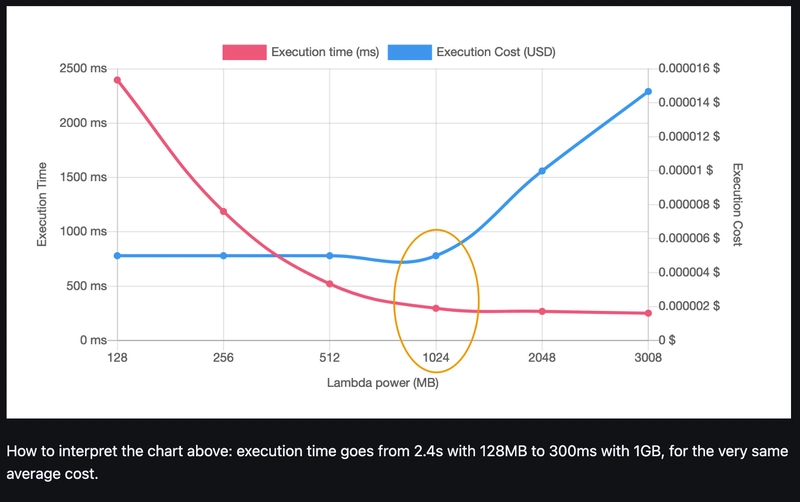Mastering OpenAI’s new Agents SDK & Responses API [Part 1]
Welcome to part 1 A few months ago, I was buried in a complex automation project, trying to make AI agents more independent. The problem? They needed too much hand-holding. Every action required a human prompt, making automation feel… not so automated. Then OpenAI dropped their Agents SDK and Responses API—a game-changer for developers like me who want AI to actually do things instead of just responding passively. These tools give you the power to build autonomous, tool-using AI agents that can search the web, retrieve files, and even call external APIs without constant human input. So, if you’ve been dreaming of building AI systems that can think and act independently, this guide is for you. Let’s break it all down. What is OpenAI’s Agents SDK? Think of the Agents SDK as a toolkit for building AI that can use tools and make decisions. It lets your AI agent: ✅ Perform multi-step tasks (without you holding its hand). ✅ Integrate with external tools (web search, API calls, databases). ✅ Autonomously decide which tool to use and when (based on context). Example: Imagine you’re an accountant using an AI tax assistant. Instead of just answering questions, the AI could: Pull real-time tax law updates from a government database. Analyze financial statements by calling a bookkeeping API. Generate reports based on the latest data. Before the Agents SDK, making this happen was a mess of manual API calls and complex logic. Now? It’s built-in. Getting Started with the Agents SDK 1. Install the SDK First, clone the repo and install dependencies: git clone https://github.com/openai/agent-sdk.git cd agent-sdk pip install -r requirements.txt 2. Set Up Your Agent Define what tools your AI can use. Let’s say we want to enable web search and file retrieval: from agent_sdk import Agent, WebSearchTool, FileRetrievalTool search_tool = WebSearchTool(api_key="your_api_key") file_tool = FileRetrievalTool() agent = Agent(tools=[search_tool, file_tool]) Now your agent knows how to search the web and fetch documents. 3. Let It Make Decisions Unlike traditional chatbots, this AI decides which tool to use based on user input: def agent_task(query): result = agent.use_tool("web_search", query) return result response = agent_task("Latest AI research papers") print(response) No manual intervention—just autonomous execution. What is the OpenAI Responses API? The Responses API is all about improving how AI interacts with users. It lets your AI: ✅ Call functions dynamically (e.g., fetch weather updates, book appointments). ✅ Return structured responses instead of random text. ✅ Stream responses in real-time for a smoother user experience. Think of it as giving your AI a better interface to talk to the world. Building a Smarter AI with the Responses API 1. Set Up API Authentication You’ll need your OpenAI API key: import openai openai.api_key = "your_api_key" 2. Define Functions Your AI Can Call Let’s say we want the AI to fetch the weather when asked: functions = [ { "name": "get_current_weather", "description": "Retrieves the current weather for a specified location.", "parameters": { "type": "object", "properties": { "location": { "type": "string", "description": "City and state, e.g., San Francisco, CA.", }, }, "required": ["location"], }, } ] 3. Make an API Request Your AI will now recognize when it needs to call a function: response = openai.ChatCompletion.create( model="gpt-4", messages=[ {"role": "system", "content": "You are a helpful assistant."}, {"role": "user", "content": "What’s the weather like in New York?"}, ], functions=functions, function_call="auto", ) 4. Execute the Function When Called If the AI determines it needs to fetch the weather, it will trigger the function: if "function_call" in response["choices"][0]["message"]: function_name = response["choices"][0]["message"]["function_call"]["name"] arguments = response["choices"][0]["message"]["function_call"]["arguments"] if function_name == "get_current_weather": location = arguments.get("location") weather_info = get_current_weather(location) # Custom function messages.append({"role": "function", "name": function_name, "content": weather_info}) # Send updated response back to OpenAI response = openai.ChatCompletion.create( model="gpt-4", messages=messages, ) Now, instead of just saying “I don’t know”, your AI will fetch the latest weather and respond intelligently. Why Does This Matter? Before these updates, most AI systems were passive—th
![Mastering OpenAI’s new Agents SDK & Responses API [Part 1]](https://media2.dev.to/dynamic/image/width%3D1000,height%3D500,fit%3Dcover,gravity%3Dauto,format%3Dauto/https:%2F%2Fdev-to-uploads.s3.amazonaws.com%2Fuploads%2Farticles%2F8cz72k32jdy9rcgeh9ar.jpg)
Welcome to part 1
A few months ago, I was buried in a complex automation project, trying to make AI agents more independent. The problem? They needed too much hand-holding. Every action required a human prompt, making automation feel… not so automated.
Then OpenAI dropped their Agents SDK and Responses API—a game-changer for developers like me who want AI to actually do things instead of just responding passively. These tools give you the power to build autonomous, tool-using AI agents that can search the web, retrieve files, and even call external APIs without constant human input.
So, if you’ve been dreaming of building AI systems that can think and act independently, this guide is for you. Let’s break it all down.
What is OpenAI’s Agents SDK?
Think of the Agents SDK as a toolkit for building AI that can use tools and make decisions. It lets your AI agent:
✅ Perform multi-step tasks (without you holding its hand).
✅ Integrate with external tools (web search, API calls, databases).
✅ Autonomously decide which tool to use and when (based on context).
Example: Imagine you’re an accountant using an AI tax assistant. Instead of just answering questions, the AI could:
- Pull real-time tax law updates from a government database.
- Analyze financial statements by calling a bookkeeping API.
- Generate reports based on the latest data.
Before the Agents SDK, making this happen was a mess of manual API calls and complex logic. Now? It’s built-in.
Getting Started with the Agents SDK
1. Install the SDK
First, clone the repo and install dependencies:
git clone https://github.com/openai/agent-sdk.git
cd agent-sdk
pip install -r requirements.txt
2. Set Up Your Agent
Define what tools your AI can use. Let’s say we want to enable web search and file retrieval:
from agent_sdk import Agent, WebSearchTool, FileRetrievalTool
search_tool = WebSearchTool(api_key="your_api_key")
file_tool = FileRetrievalTool()
agent = Agent(tools=[search_tool, file_tool])
Now your agent knows how to search the web and fetch documents.
3. Let It Make Decisions
Unlike traditional chatbots, this AI decides which tool to use based on user input:
def agent_task(query):
result = agent.use_tool("web_search", query)
return result
response = agent_task("Latest AI research papers")
print(response)
No manual intervention—just autonomous execution.
What is the OpenAI Responses API?
The Responses API is all about improving how AI interacts with users.
It lets your AI:
✅ Call functions dynamically (e.g., fetch weather updates, book appointments).
✅ Return structured responses instead of random text.
✅ Stream responses in real-time for a smoother user experience.
Think of it as giving your AI a better interface to talk to the world.
Building a Smarter AI with the Responses API
1. Set Up API Authentication
You’ll need your OpenAI API key:
import openai
openai.api_key = "your_api_key"
2. Define Functions Your AI Can Call
Let’s say we want the AI to fetch the weather when asked:
functions = [
{
"name": "get_current_weather",
"description": "Retrieves the current weather for a specified location.",
"parameters": {
"type": "object",
"properties": {
"location": {
"type": "string",
"description": "City and state, e.g., San Francisco, CA.",
},
},
"required": ["location"],
},
}
]
3. Make an API Request
Your AI will now recognize when it needs to call a function:
response = openai.ChatCompletion.create(
model="gpt-4",
messages=[
{"role": "system", "content": "You are a helpful assistant."},
{"role": "user", "content": "What’s the weather like in New York?"},
],
functions=functions,
function_call="auto",
)
4. Execute the Function When Called
If the AI determines it needs to fetch the weather, it will trigger the function:
if "function_call" in response["choices"][0]["message"]:
function_name = response["choices"][0]["message"]["function_call"]["name"]
arguments = response["choices"][0]["message"]["function_call"]["arguments"]
if function_name == "get_current_weather":
location = arguments.get("location")
weather_info = get_current_weather(location) # Custom function
messages.append({"role": "function", "name": function_name, "content": weather_info})
# Send updated response back to OpenAI
response = openai.ChatCompletion.create(
model="gpt-4",
messages=messages,
)
Now, instead of just saying “I don’t know”, your AI will fetch the latest weather and respond intelligently.
Why Does This Matter?
Before these updates, most AI systems were passive—they just answered questions based on text input. Now, with the Agents SDK and Responses API, you can build AI that actually takes action.
Real-World Use Cases
- AI-Powered Accounting → Automate bookkeeping, fetch tax laws, and generate reports.
- Customer Support → AI can call APIs to check order statuses or resolve support tickets.
- Automated Research Assistants → Fetch the latest market trends, financial data, or legal updates.
- AI Chatbots for Business → Let customers book appointments, check product availability, or retrieve invoices without human help.
This is the future of AI—AI that does, not just talks.
Final Thoughts: Why You Should Start Now
If you’re serious about building next-gen AI applications, learning to use OpenAI’s Agents SDK and Responses API is a must.
With these tools, you can:
✅ Make AI truly autonomous → No more manually triggering actions.
✅ Build AI-powered assistants → Capable of fetching, analyzing, and acting on real-world data.
✅ Create smarter, interactive apps → That can use tools, call APIs, and respond dynamically.
The best part? You can start right now.




















































%20Abstract%20Background%20112024%20SOURCE%20Amazon.jpg)






















































































































![[The AI Show Episode 142]: ChatGPT’s New Image Generator, Studio Ghibli Craze and Backlash, Gemini 2.5, OpenAI Academy, 4o Updates, Vibe Marketing & xAI Acquires X](https://www.marketingaiinstitute.com/hubfs/ep%20142%20cover.png)
























































































































































































































































-Nintendo-Switch-2-–-Overview-trailer-00-00-10.png?width=1920&height=1920&fit=bounds&quality=80&format=jpg&auto=webp#)





















_Anna_Berkut_Alamy.jpg?#)













































































































![YouTube Announces New Creation Tools for Shorts [Video]](https://www.iclarified.com/images/news/96923/96923/96923-640.jpg)





































































![[Weekly funding roundup March 29-April 4] Steady-state VC inflow pre-empts Trump tariff impact](https://images.yourstory.com/cs/2/220356402d6d11e9aa979329348d4c3e/WeeklyFundingRoundupNewLogo1-1739546168054.jpg)





























































